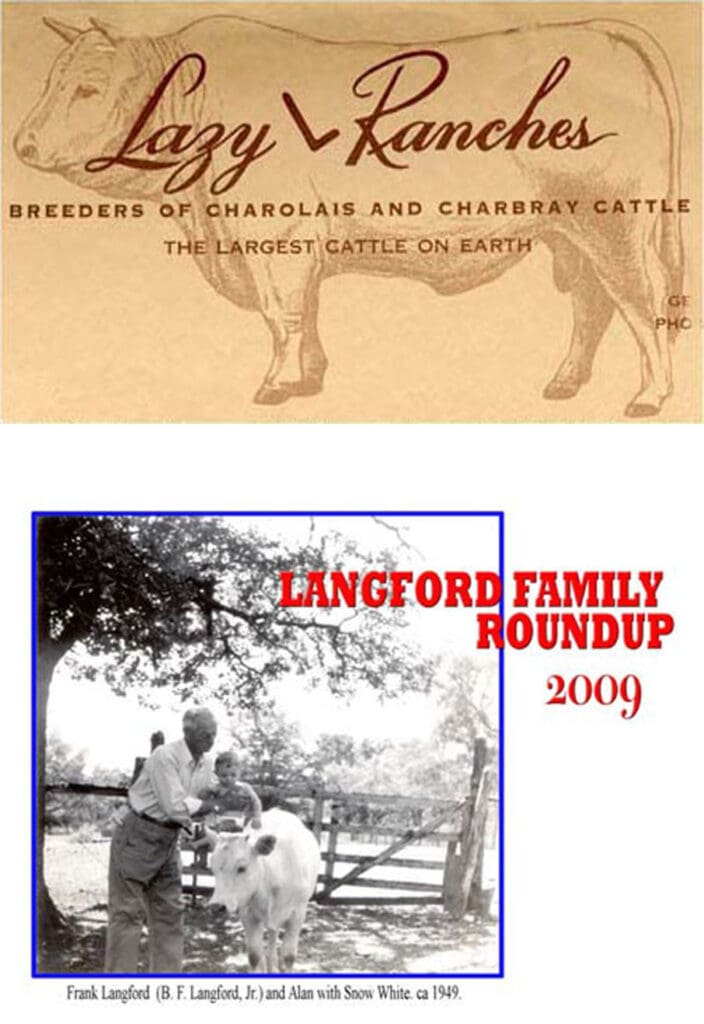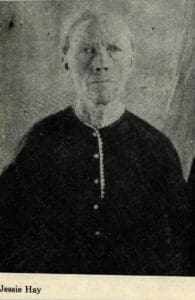
Wight's Mormon Colony
A band of dissident Mormons seeking refuge following the murder of Joseph Smith Jr., led by a maverick apostle named Lyman Wight, set out to Texas in 1845.They brought gristmills and sawmills and were farmers, cowboys, office holders and buffers against Comanches. They played important roles in establishing American Society.
Jessie Hay, widow of Alexander Hay, was the first woman to receive real property in Bandera. When she died she left an estate of 320 acres of land, lots 15 and 16 in Bandera and 80 head of cattle plus the house and household goods.
Jessie and Alexander Hay were among the first to be baptized as Mormons in Scotland.

Masonic Order
Bandera Masonic Lodge, N.324
Members of the Bandera Masonic Lodge, N.324, chartered in 1870. For 35 years it was the outstanding Masonic Lodge in the Hill Country.
Members of the Bandera Masonic Lodge, N.324, chartered in 1870. For 35 years it was the From left to right: 1. John J. Bandy, 2. George Elam, 3. Bill Davenport, 4. George Hay, 5. H.H.Carmichael, 6. Charles W. Harris, 7. Henry Rackow, 8. Unknown, 9. Lee Risinger (married Georgianna Hay), 10. W. D. (Seco) Smith, 11. Henry Carmichael, 12. Marsh Click, 13. Ben Bennett, 14. Joe Carmichael, 15. George T. Lincoln, 16. W. M. Hartley, 17. F. W. Ducrow, 18. Captain Goodman
Photo taken in 1888.
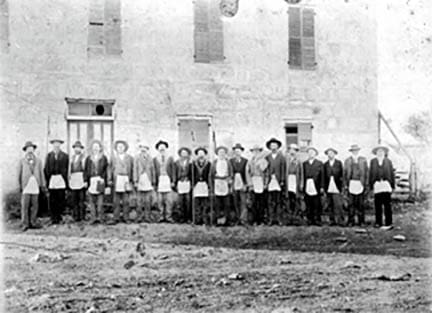

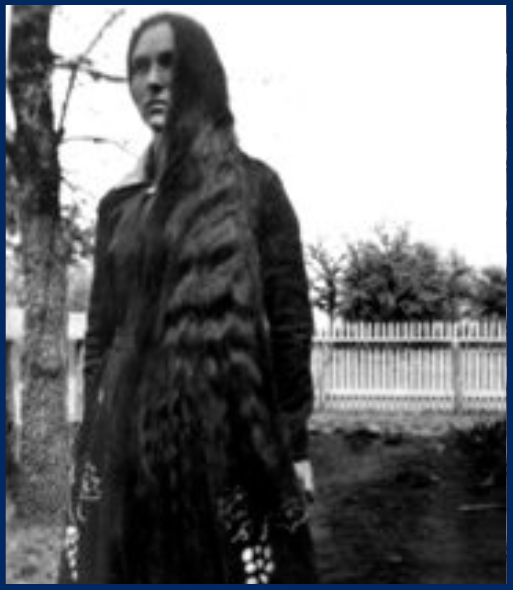
Order of Eastern Star
Mary Hay Langford just before her trip to El Paso to represent the Bandera Eastern Star members. The Bandera Order of the Eastern Star was organized October 13, 1920.
Photo taken 1926.

Much of Bandera County’s history, as well as the history of Texas and the Southwest, would have been lost but for the efforts of J. Marvin Hunter. An itinerant print, he and his family roamed over West Texas, Arizona, New Mexico and Mexico. He settled down with his wife and children in 1921 when he purchased the newspaper, The Bandera New Era. Bandera was a ratty, little town with a population of less than 400, but he knew that with the proper publicity, it could be made into a playground for Texas.
J. Marvin Hunter’s son, Warren , married Lora Langford. With the help of family members, he studied at the Chicago Art Institute to become a leading artist of the Southwest. For more detail, see www.warrenhunter.com.
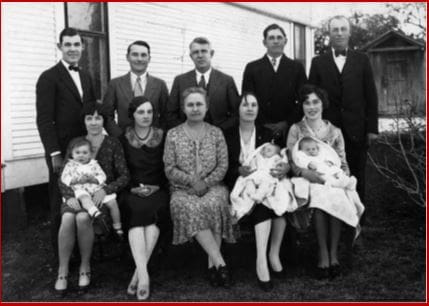

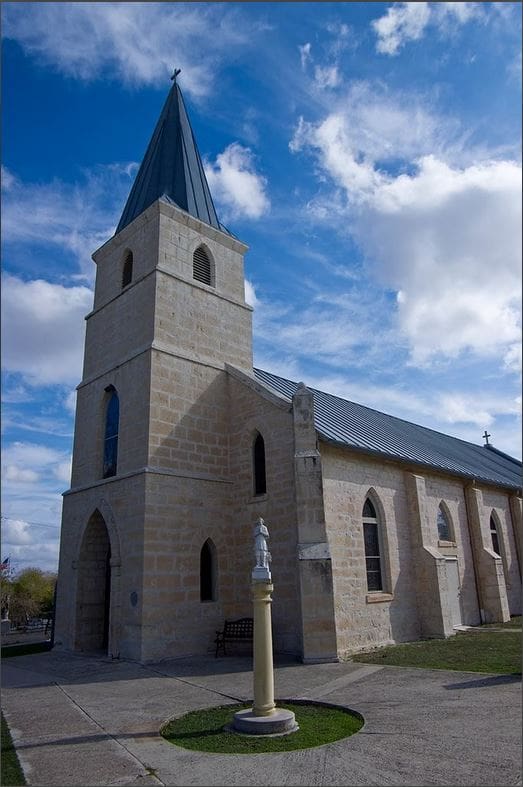
Polish Families
A series of disasters in the 1850s in Poland created the real impetus for significant immigration to Texas. Severe weather, a poor economy, floods, lack of food, epidemics of typhoid and cholera; all these spurred interest in a better life elsewhere. Eleven Polish Silesian families settled in Bandera in 1855 and went to work for established residents in Bandera and soon became substantial members of the community. Some were engaged in making shingles and traveled to San Antonio with wagons full of shingles for sale, others worked in Bandera’s sawmill. The Anderwald, Dugosh, and Kalka families had lived within a mile of each other near Rozmierz in Silesia, Poland. In Poland they were builders, rock masons, and carpenters. Bandera’s Polish Silesians provided the labor for the St. Stanislaus Catholic Church, the oldest standing continuously-used Polish Catholic Church building in the U.S. They also helped build many of the limestone buildings that are still standing in Bandera today.

Historic Bandera Cemetery
The contribution of land to form a cemetery and the establishment of a Cemetery Association contributed moral stability to a rough hewn frontier region fraught with hardships. The Bandera Cemetery represents the place where the community gathered to share their grief and honor their lost loved ones.
The Bandera Cemetery, off Highway 173 north, was used as a burial place before the town was
laid out in 1853. The earliest headstone found is dated 1851. It belongs to the son of Charles and Bernice Bird, James Victor, 1821-1851.
The Bandera Cemetery association was organized in 1907 by seven women: Mrs. Laura (Andrew) Mansfield, Mrs. H. C. Barnes, Mrs. Julia M. Lincoln, Mrs. R. A. Chipman, Mrs. Mary Bruce,
and Mrs. M. S. Barnes. Miss May Weldon served as the secretary of the committee. Several
generations of women have left their marks on the unique region of frontier Texas, helping to soften
and civilize the land.
The Cemetery continues to be active, consists of more than fifteen acres (longitude 99 4.55’W, latitude 29 44.02’N), and contains more than 900 graves.
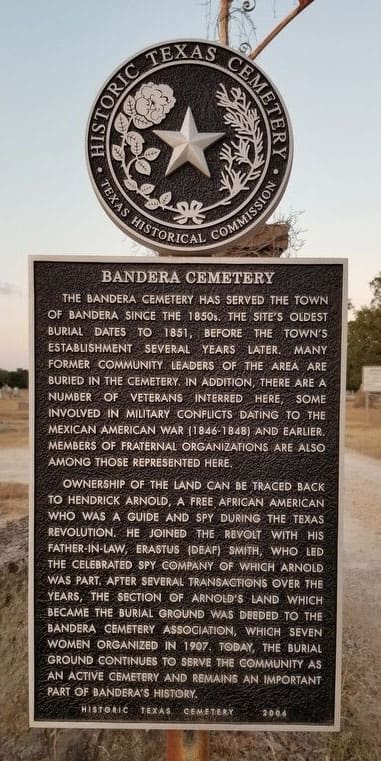

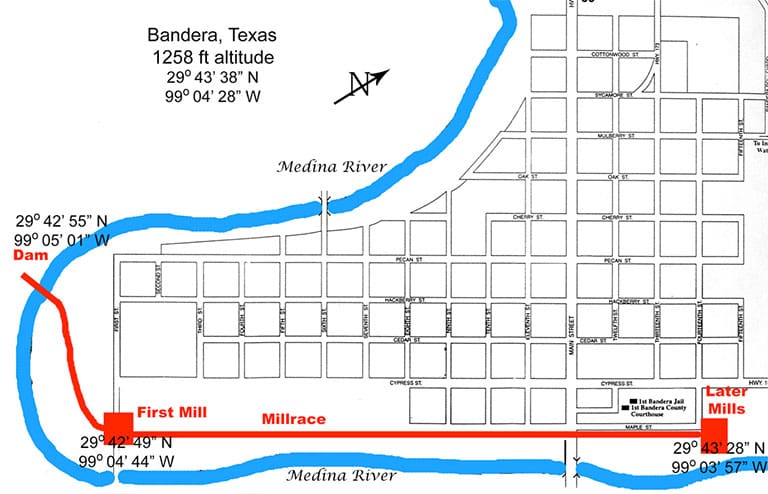
Bandera Sawmills
The town of Bandera prospered because of the cypress mill and the industrious settlers. The Polish immigrants became expert shingle makers. The cypress trees were milled into 16-inch blocks, split and rived with a froe knife and wooden mallet. The rough cut shingles would then be taken to the old shaving house and trimmed to a feathered edge with a drawing knife. The finished shingles were stacked to season and then baled in bundles of 1,000. One big ox-wagon could haul about 25,000 shingles. The price in San Antonio was about $4.50 per thousand shingles. A good shingle maker
could make a thousand shingles a day.
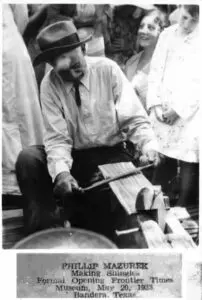

Langford Charolais And Charbray
The Langford Ranches (B. F. Langford JR, Dr. C.H. Langford, Othell Langford,Eldon W. Langford) with the Fred Turner ranch brought Charolais cattle in from France to Mexico where they were quarantined for 90 days before the cattle were released to the Langford Ranch in Bandera, Texas. Max Michaelis III worked with Othell Langford several years getting the animals registered. The Langford Ranches sold purebred Charolais and Charbray crosses. They had a string of show cattle at the San Antonio Livestock Show, Dallas state fair and Houston Livestock show. Several cattle were placed in Experimental stations at Texas A&M University and Ohio State. The Langford Ranches sold purebred Charolais and Charbray to ranchers worldwide. Snow White, pictured below, had her teeth capped at Texas A&M as a geriatric dental patient.
